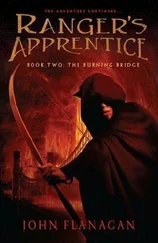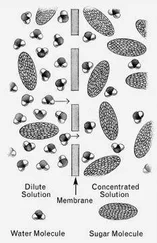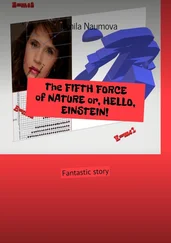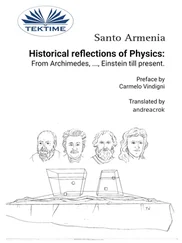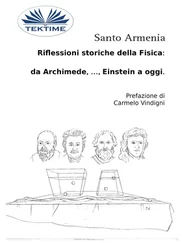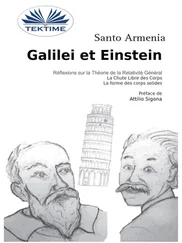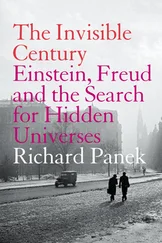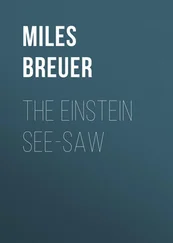“That,” said George, “means the Snark went through the inner slab of the depleted uranium absorber, made a big flash of light in this lead glass scintillator, but never made it to the outer muon detector. It stopped somewhere in here.” A column of green numbers appeared momentarily above the place where the red track ended.
The field of view expanded and grew more detailed. Alice could see structures within structures within structures.
The hand gestured again, and a bar with a hexagonal cross section lit with a violet glow. “Jackpot!” said George. “The Snark hit this lead-glass scintillator unit, and the thing is still scintillating, half a day later. I think our Snark must be embedded in it.” The hands made another gesture…
… and Alice found herself before the statue of the goat-headed man.
“Okay, I have the Snark’s coordinates,” George said. “Now we know where it’s hiding. So we need to figure out how to get to it.”
They moved off through the forest of statues at a dizzying speed.
ROGER GLANCED AT HIS WATCH. HE HAD BEEN TALKING for about forty-five minutes now. The seminars of the SSC Particle Theory Group were supposed to last an hour, but that rule was frequently breached by long-winded speakers. At the rate he was going, however, he would finish easily with some time for questions. That was fine, because his headache was intensifying again. “So,” he said, “last night I set up the problem on my workstation to do a preliminary evaluation of the perturbation series, using the formalism outlined on the previous transparencies. Here’s what Mathematica gave me. It’s a standard 3-D plot of generalized isospin against flavor, treating both as continuous variables for the purposes of the minimization, with mass as the altitude on the vertical axis.” He placed the color transparency on the stage of the overhead projector. It was a brightly hued two-dimensional surface that showed the gentle rolling hills of the surface, punctuated here and there by deep depressions.
Roger ran the red spot of the laser pointer over the numbers near the depressions. “As you can see, the minimization gets the masses of each of the ground-state mesons to better than 1 percent. I think that can be improved, but it’s fairly good as it stands. I haven’t had time to investigate the baryons, but I see no reason why it should not do as well for them.” He paused and massaged his temples. His forehead was pounding. The bright colors of the slide seemed to bring with them peculiar individual odors. He turned toward his seated colleagues. “Well, that’s about all. This formulation is only one day old, but it shows, as they say, initial promise. In fact, I think it looks quite lovely! Thank you.” He nodded to the group to indicate he was through and switched off the projector.
The applause from his theoretical colleagues, usually somewhat perfunctory and reserved at the end of an informal theory seminar like this one, was thunderous. Roger smiled. He knew that he had done well. They had understood the complicated ideas that he’d presented, and they were delighted with his new approach.
“Questions?” he said quietly, and a dozen hands shot up. As he turned to point to a postdoc in the front row, he was surprised by a sharp peculiar odor. He stared in bewilderment at his audience. Each person seemed to have a bright coruscating aura around his head. Roger could feel the points of each aura like sharp individual pinpricks. Their faces were weirdly distorted, and they were attempting to speak to him in sibilant glottal languages that he could not comprehend.
The sharp smell intensified, and his ears filled with a high-pitched warbling susurrus that seemed to whisper hints of forbidden knowledge. A vast enveloping darkness closed in about him, and he could feel himself falling out of the world…
June 11, 2004 January 15, 1990
The only way to keep the cost of the SSC at $5.9 billion would be to seriously reduce its capabilities… We considered whether there are cuts that would allow substantial savings… restored later. We found none.
— REPORT OF THE DRELL PANEL ON THE SSC
It’s important that we not end up with a Cadillac but with a Chevrolet… I’ll help Congress get over the sticker shock, and you’ll have to make sure of a sturdy and reliable Chevy.
— SENATOR PHIL GRAMM (R.-TEXAS)
May 10, 1991
[The SSC costs are] on the road to a bottomless pit.
— CONGRESSMAN JAMES SENSENBRBNNER (R.-WISCONSIN)
February 7, 1992
Exotic luxuries like the Space Station and the Super Collider perhaps ought to be put off or canceled until we can shore up ourfaltering economy.
— SENATOR ROBERT BYRD (D.-WEST VIRGINIA)
May 1, 1992
We told [the other congressmen) that the DOE had blown the $5 billion budget cap [voted by the House in 1990], that we were not going to see the $1.7 billion in foreign contributions, and that they wanted to balance the budget. It’s an easy case to make in fifteen or twenty seconds.
— STAFF AIDE TO CONGRESSMAN SHERWOOD BOEHLERT (R.-NEW YORK)
This place [the SSC] attracts scientific genius the way the Dream Team attracts autograph seekers.
— PRESIDENT GEORGE BUSH
TUNNEL MAKER FLOATED INTO THE INSTRUMENTATION enclosure and connected to a neural node. He felt anxious. It had been more than two rotations since the Bridge had been established and there was still no indication that the Bridgehead had been noticed. The instruments recorded that it remained at rest in the same medium of elements 82, 14, and 8 where it had been stopped. Occasional short-duration flashes of light were observed. These occurred at very regular intervals. They were perhaps part of a testing process but were definitely not a signal.
Tunnel Maker’s apparatus continued to send light-coded messages through the Bridge. These used the time-tested codes that had been successful in other contacts. They had now been transmitted many times over the past three days, but with no response.
Tunnel Maker considered his options. He could continue on the present course. He could try other more energetic transmissions, bursts of positrons, muons, gamma rays, or antiprotons that might attract attention to the Bridgehead. Or he could notify the Concantation of Individuals that this attempt to establish contact with a microcsopic Bridge had failed and that the time had come to enlarge the Bridge to macroscopic size and perhaps send an Emissary through the Bridge aperture.
It was clear that he must allow more time before approaching the Concantation. And increasing the energy of the signals had its dangers for the inhabitants of the other Bubble, who might be damaged by the radiation. He would save it as a last resort. He decided that he must be patient. Experience with other contacts indicated that communication often required a dozen or so rotations.
Tunnel Maker resolved to wait for at least another dozen rotations before taking any further action. The waiting vigil was the most difficult part of contact.
GEORGE SAT IN THE THIRD ROW OF THE SSC’S LARGE lecture theater. The room was about one-fourth full. The speaker was a distinguished theorist, a Nobel laureate and holder of an endowed chair on physics at an Ivy League university. He waved the laser-spot pointer at the diagram projected on the tall screen at the front of the room. He was discussing the Energy Desert and once again raising the possibility that particle physics, as practiced at the SSC, was about to come to an end.
George had heard this argument before. The progress of particle physics had been driven by a succession of ever more powerful accelerators beginning with E. O. Lawrence’s original cyclotron and culminating with the SSC. The field had advanced in a series of carefully orchestrated leaps, quantum jumps from each particle accelerator to the next new and more powerful one. And like clockwork, again and again new phenomena, completely unexpected discoveries, had appeared when each new accelerator began to produce its higher-energy particle beams. One of the wisdoms of science is that to see what none have seen before you must look where none have looked before. That maxim was epitomized by the unbroken chain of remarkable discoveries that had emerged from experimental particle physics from the 1930s onward. But the chain could break.
Читать дальше



